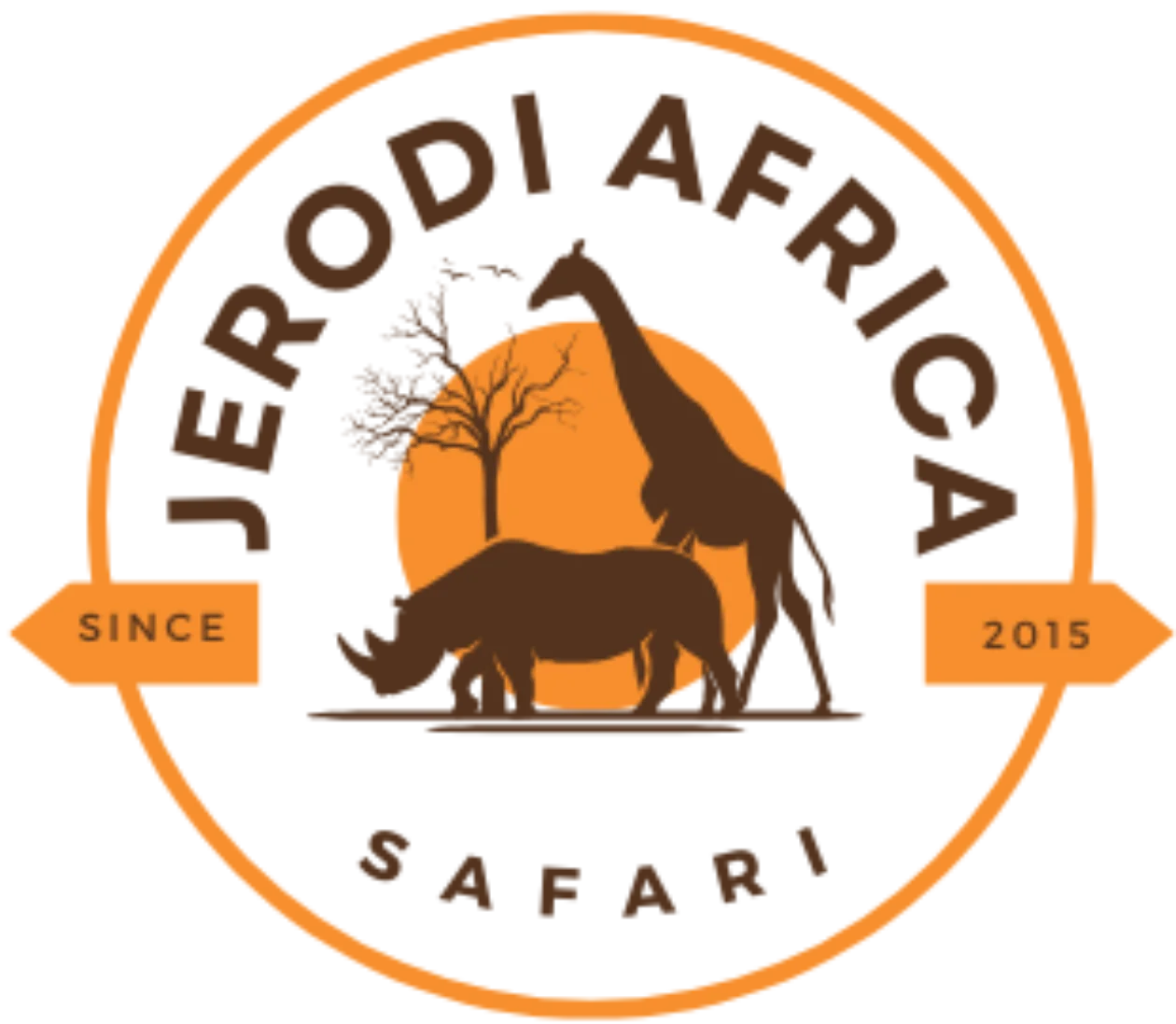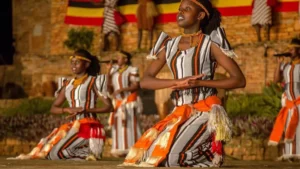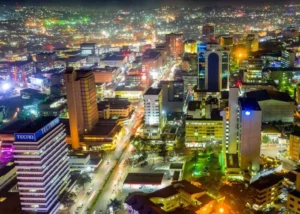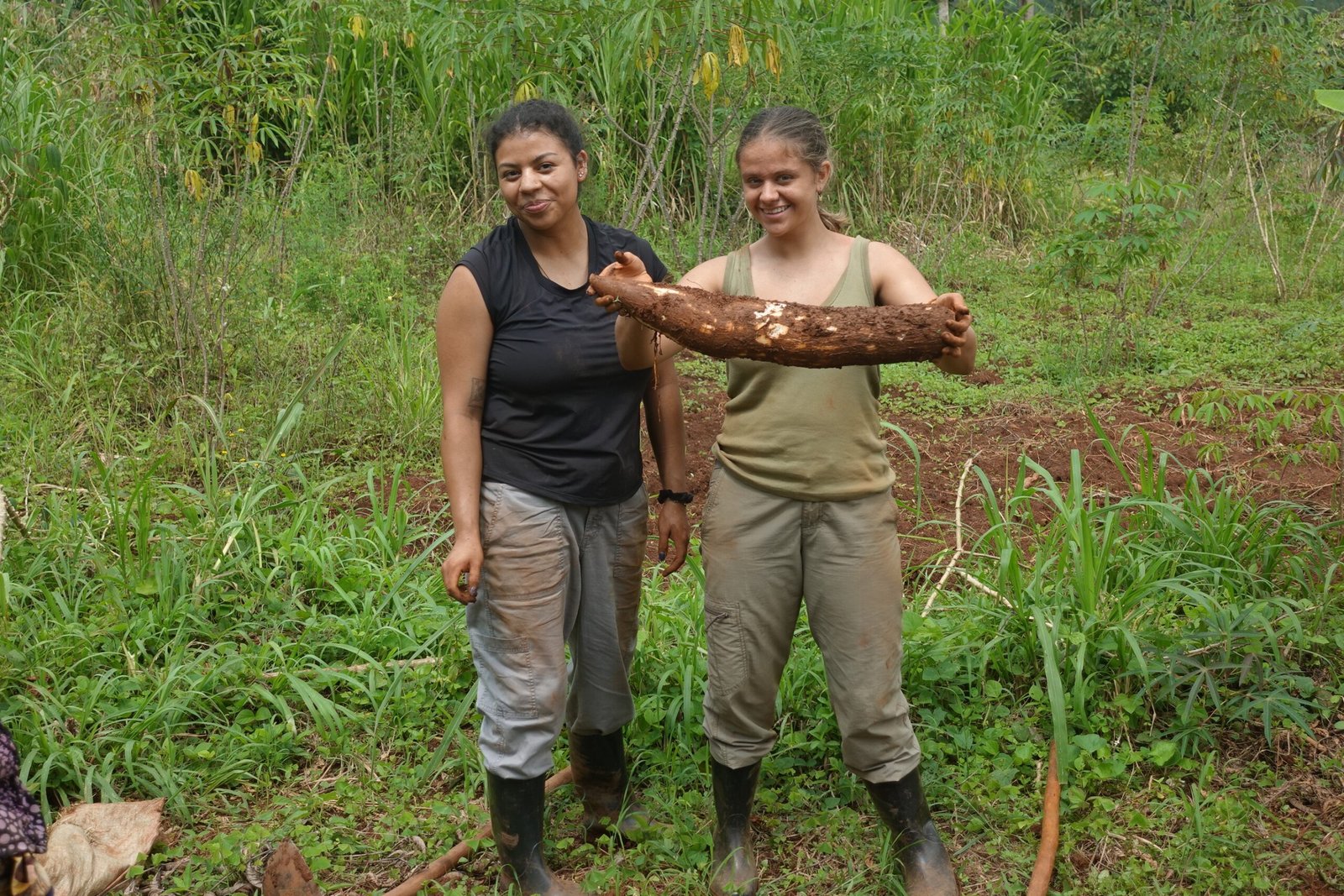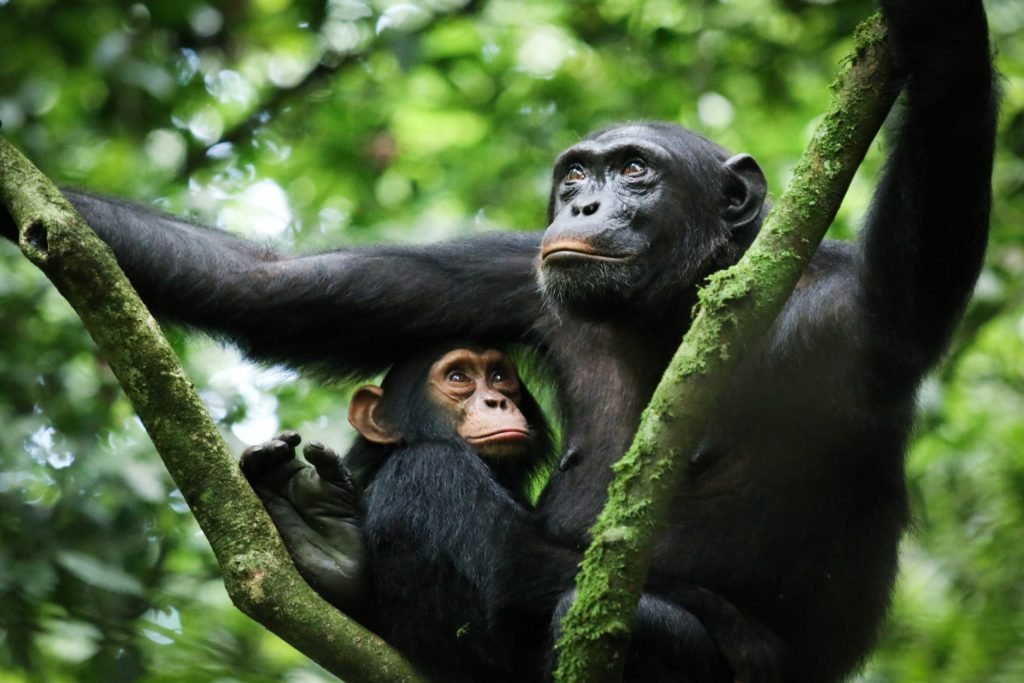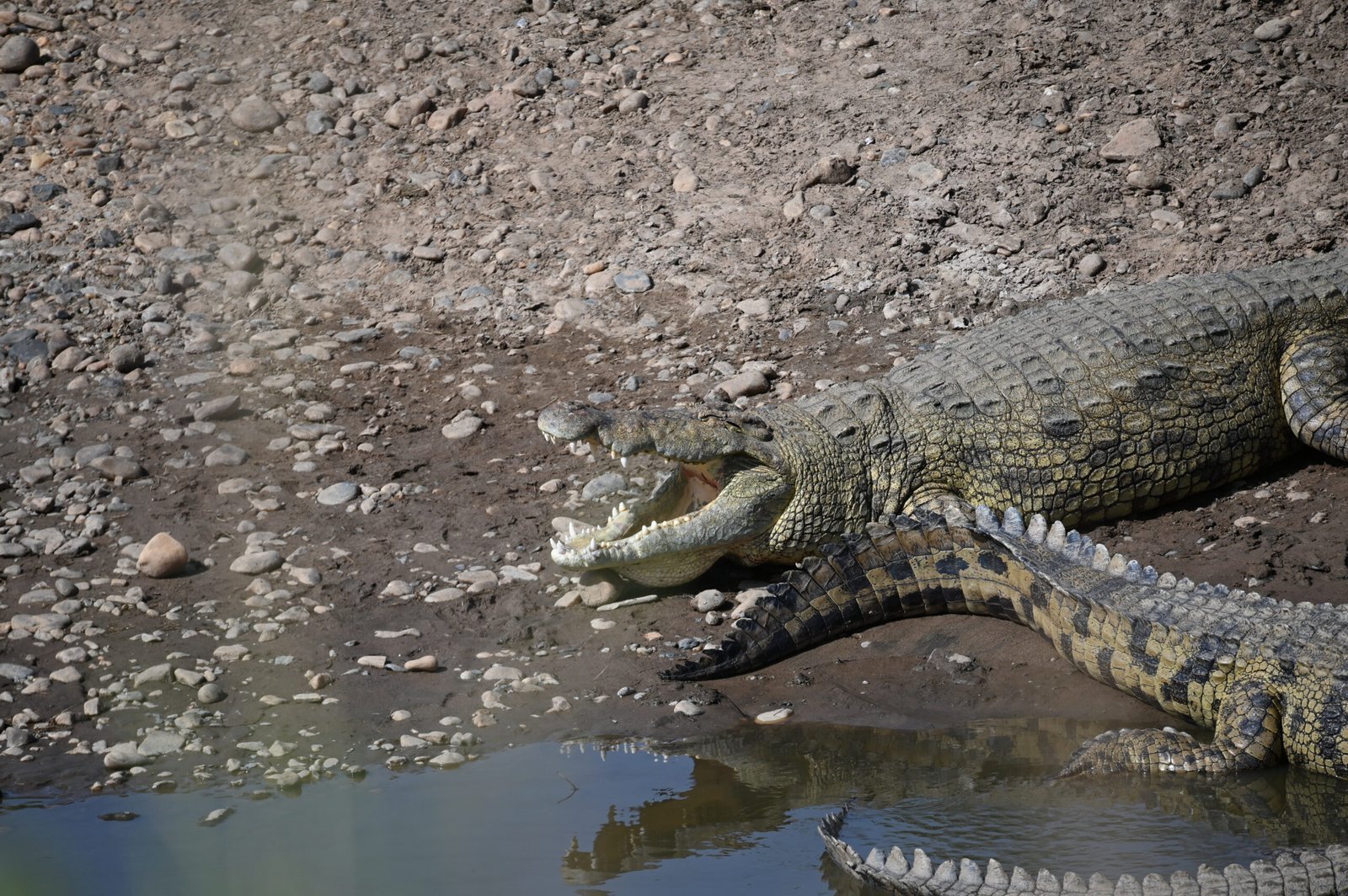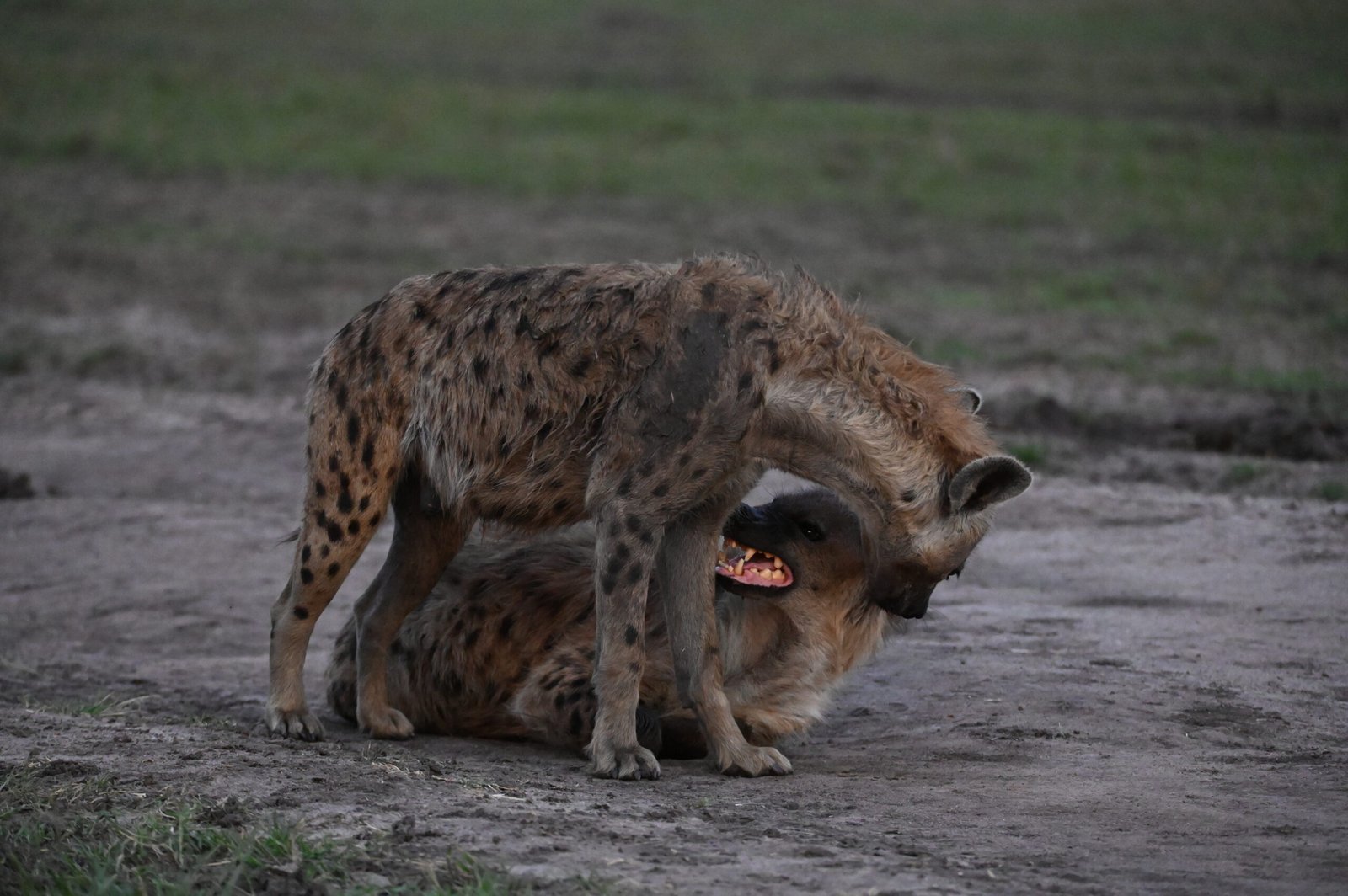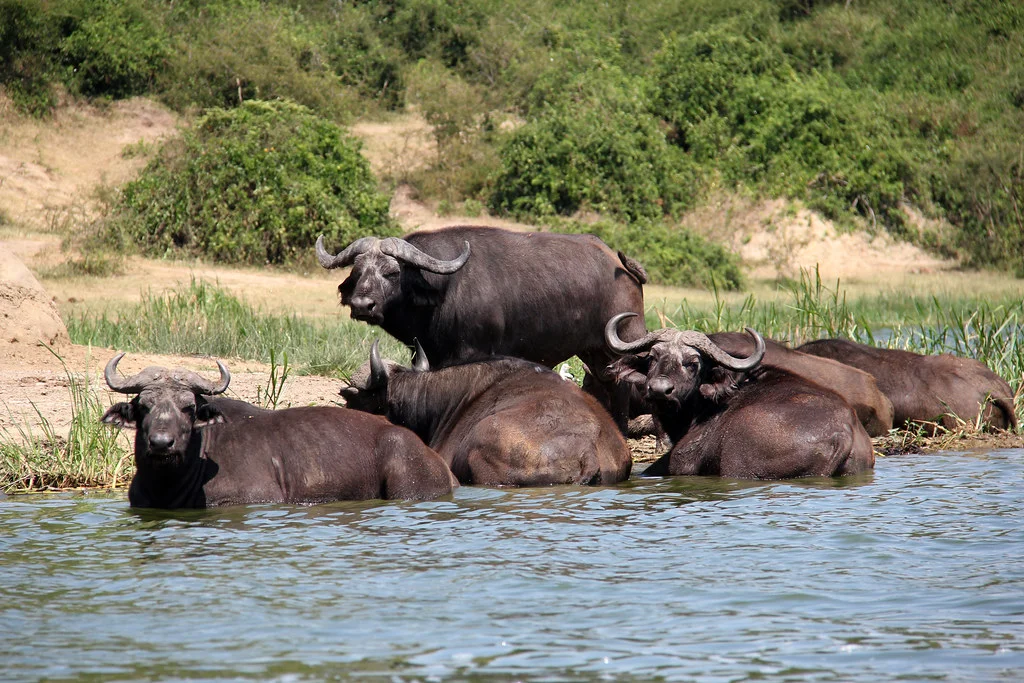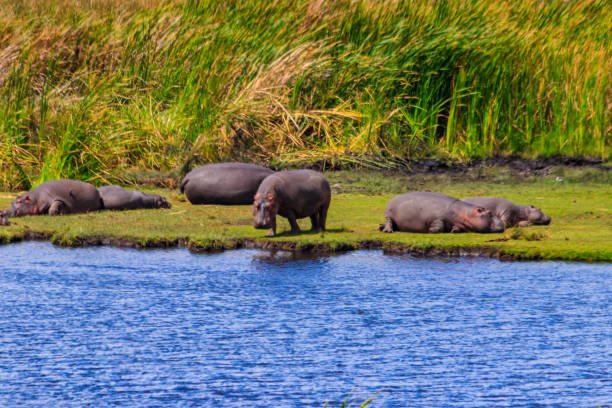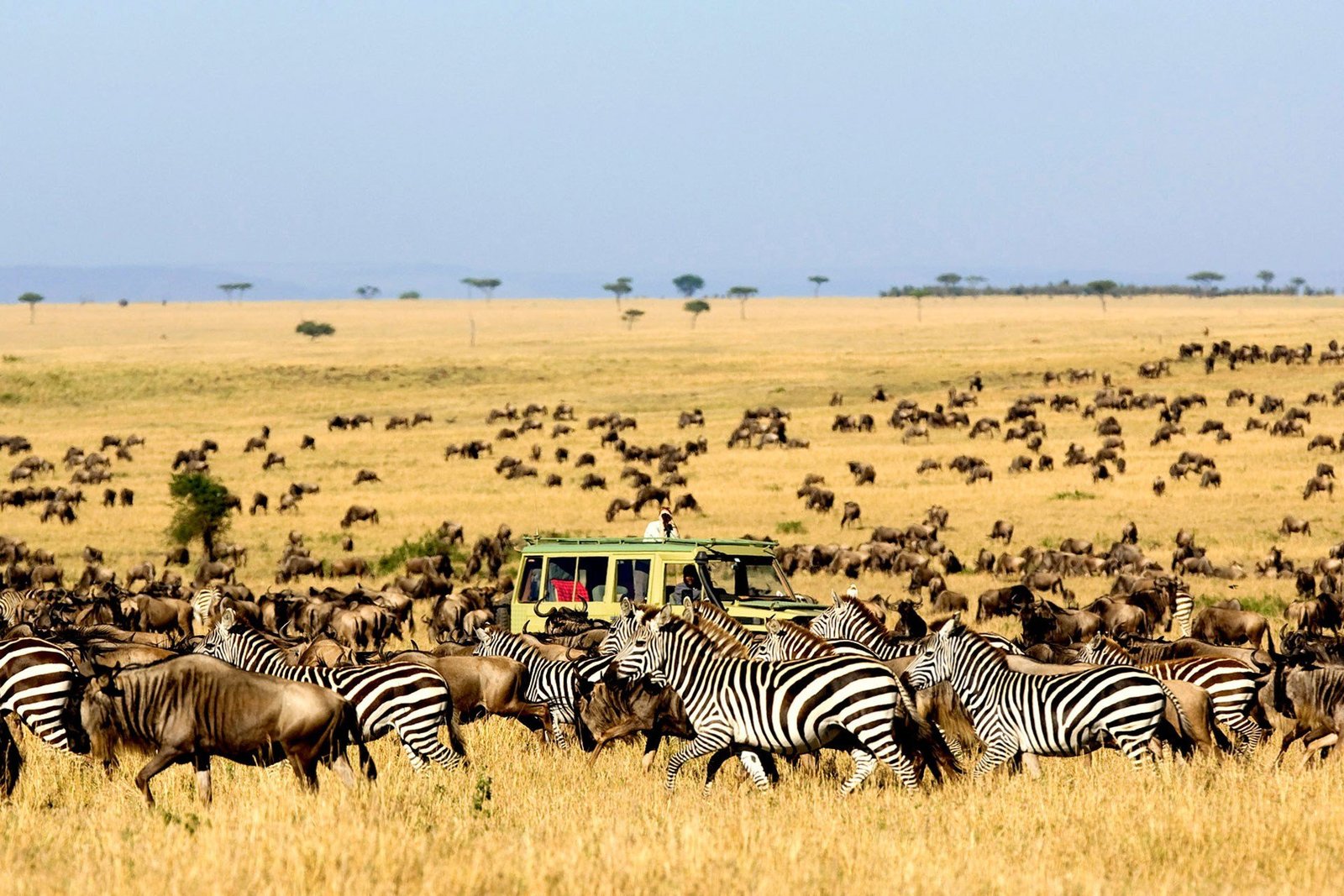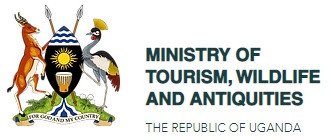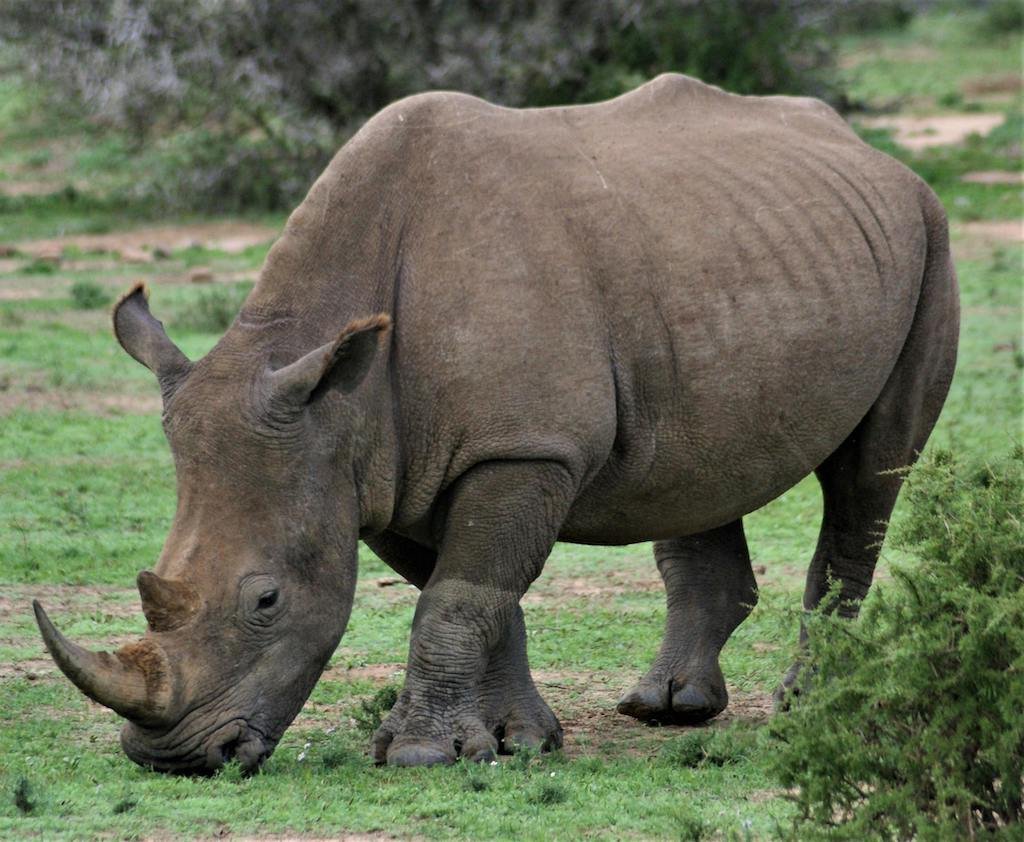
Rhinos in Uganda
Rhinos in Uganda are a symbol of resilience and a testament to the country’s conservation success. Although these iconic giants were once extinct in the wild due to poaching and habitat loss, Uganda is now home to a growing population of white rhinos thanks to dedicated restoration efforts. Today, visitors can observe these majestic creatures up close in protected areas while learning about their ecology and conservation.
Social Structure and Home Ranges
When it comes to social lives, black and white rhinos couldn’t be more different.
White rhinos, particularly those at Ziwa, are surprisingly sociable for such massive mammals. They often form loose groups called “crashes,” with females and their calves being the most likely to stick together. These family units may join up at waterholes or mud wallows—sort of like rhino community meetups—where several individuals share the same space without much fuss. As for their home ranges, white rhinos tolerate a fair bit of overlap, allowing multiple groups to graze and roam the same territory.
In contrast, the black rhino is known for its solitary and sometimes cantankerous nature (think less bustling village, more private retreat). Adult black rhinos each claim their own territory, which they mark with dung and urine. While their home ranges can overlap at the edges—especially where resources are plentiful—these encounters are generally brief, and socializing is kept to a minimum aside from mothers with their calves.
In both species, home ranges are determined by access to key resources like water, grazing, or browsing patches, but their social dynamics set them apart in the wilds of Africa.
Breeding Season and Gestation
Unlike some species, white rhinos do not have a fixed breeding season. Mating can occur at any time of the year, provided the environmental conditions and health of the rhinos are optimal.
-
- Gestation Period: Around 16 months
-
- Birth Interval: Every 2.5 to 3 years
-
- Offspring: One calf per pregnancy
Therefore, rhino population growth is slow, making each calf crucial to the survival of the species. Mothers are highly protective, and calves remain with them for up to three years.
Population and Habitat
As of 2025, Ziwa Rhino Sanctuary in Nakasongola District is the only place in Uganda where rhinos can be seen. The sanctuary is home to over 35 Southern White Rhinos living in a semi-wild habitat that includes savannah grasslands and wetlands.
(Internal Link: Visit Ziwa Rhino Sanctuary)
Although they are currently restricted to this protected area, there are long-term plans to reintroduce rhinos into larger national parks like Murchison Falls and Kidepo Valley once populations are stable and security is guaranteed.
How Rhinos’ Senses Influence Their Behavior
Rhinos are sometimes considered a bit short-sighted—literally. Their eyesight is rather limited, which means they often rely on their other, sharper senses to navigate their environment. This less-than-perfect vision may explain the occasionally abrupt charges you hear about on safari. If a rhino feels threatened or isn’t quite sure what’s lurking nearby, it’s apt to respond first and ask questions later (well, as much as a rhino can).
But what they lack in visual clarity, rhinos make up for with keen hearing and an excellent sense of smell. Their large, swiveling ears pick up sounds from all directions, while their sensitive noses can detect scents from impressive distances. These heightened senses help them stay alert to predators, find water and grazing areas, and identify one another—even when visibility across the grasslands is low.
Feeding Habits and Daily Behavior
Rhinos are strict grazers, consuming up to 120 pounds of vegetation daily. They feed primarily on short grasses and require access to water, both for drinking and wallowing to cool off.
Although solitary by nature, females with calves often form small groups. Adult males are territorial and prefer solitude. In addition, rhinos communicate through vocalizations, scent markings, and physical displays.
Rhino Lifespan and Survival
In protected environments like Ziwa, rhinos can live between 40 and 50 years. However, in fully wild conditions, their lifespan may be shorter due to disease, poaching, and competition.
As a result, sanctuaries play a vital role in extending their life expectancy by minimizing threats and providing veterinary care.
Why Ziwa Rhino Sanctuary Was Chosen
Ziwa was selected for several reasons. Firstly, it lies between Murchison Falls National Park and Kampala, making it easily accessible. Secondly, its secure fencing, ample grazing land, and water sources offer an ideal environment for rhino recovery.
Furthermore, surrounding communities support the sanctuary through tourism, conservation education, and anti-poaching programs.
The Role of Wildlife Scouts in Rhino Protection
A key pillar of rhino conservation is the unsung work of wildlife scouts. These dedicated individuals serve as the eyes and ears of the sanctuary, patrolling daily to deter poachers and swiftly respond to any threats. Equipped with specialized training, scouts know the landscape and the habits of local wildlife inside and out.
Their intimate connection with the surrounding communities allows them to recognize unfamiliar activity or signs of intrusion quickly. Scouts monitor not only rhino movements but also other wildlife, relaying critical information to the Uganda Wildlife Authority and local law enforcement partners. By maintaining a constant presence and building trust with local residents, wildlife scouts play an essential role in safeguarding rhinos and supporting broader conservation efforts.
Their vigilance has been instrumental in making Ziwa Rhino Sanctuary a secure environment where rhinos have a real chance to recover and thrive.
The Crucial Role of Legal Systems in Rhino Conservation
Legal systems are a backbone of effective rhino conservation efforts. Robust wildlife protection laws, consistent enforcement, and meaningful penalties help deter poaching and trafficking across Uganda and beyond.
A few key approaches include:
- Stronger Law Enforcement: Enhancing surveillance and patrols in rhino habitats is vital. Working closely with agencies such as the Uganda Wildlife Authority and other law enforcement bodies ensures poachers face swift consequences.
- Tougher Penalties: Increasing the severity of punishment for wildlife crimes—such as longer prison terms and higher fines—acts as a deterrent for those considering poaching or illegal trade.
- Policy Advocacy: Collaborating with policymakers to close legal loopholes and bolster anti-trafficking legislation is essential for both national and international protection.
- International Cooperation: Since illegal wildlife products often cross borders, coordinated efforts with regional and global partners, including organizations like INTERPOL and CITES, help track, apprehend, and prosecute offenders.
- Public Awareness in the Judiciary: Providing training and information to legal professionals increases awareness about the seriousness of wildlife crimes, leading to more effective prosecution and sentencing.
By reinforcing the legal framework and coupling it with conservation action on the ground, Uganda moves closer to securing a future for its rhino population.
Where Rhinos Live in Africa Today
Today, both black and white rhinos roam across several African countries—although their numbers and ranges vary greatly depending on decades of conservation effort. Most of Africa’s white rhinos are found in South Africa, but healthy populations also exist in Namibia, Zimbabwe, and Botswana. Thanks to reintroduction projects, you can also spot southern white rhinos in countries like Kenya, Zambia, and even as far west as Côte d’Ivoire.
Black rhinos, historically widespread, are now mainly concentrated in four countries: South Africa, Namibia, Zimbabwe, and Kenya, which collectively shelter the vast majority of the world’s population. Smaller groups are also found in regions spanning from Cameroon to Kenya. Other nations with smaller, managed populations include Swaziland (Eswatini).
For visitors and conservationists alike, these countries remain vital strongholds for Africa’s remaining rhinos.
Safari Safety: What to Do During a Charge?
Though rhinos are generally calm, they may charge if startled or threatened. Here are crucial safety tips:
-
- Do not run. Rhinos can sprint at 50 km/h and will chase movement.
-
- Find cover behind a tree, rock, or termite mound.
-
- Avoid sudden movements and stay calm.
-
- Listen to your guide’s instructions at all times.
Professional rangers at Ziwa are trained to manage these encounters, ensuring a safe and educational experience for all visitors.
Rhinos in the Big Five Experience
Rhinos are one of Africa’s Big Five, alongside lions, leopards, buffaloes, and elephants. In Uganda, however, rhinos are only found at Ziwa, making it a must-visit stop to complete your Big Five safari adventure.
(Internal Link: Uganda Big Five Safari Packages)
Therefore, no Uganda safari is complete without a visit to Ziwa Sanctuary
Final Thoughts
Rhinos in Uganda represent hope, survival, and the power of conservation. Thanks to years of dedicated efforts by wildlife authorities and conservationists, these majestic creatures are once again roaming Uganda’s savannahs. In addition, tourism and community engagement have played a vital role in their recovery.
So, whether you’re a passionate wildlife traveler or a first-time visitor, encountering a rhino in Uganda offers not just a photo opportunity—but a connection to Africa’s natural legacy. Therefore, plan your safari today and be part of the journey to protect these incredible animals for generations to come.
